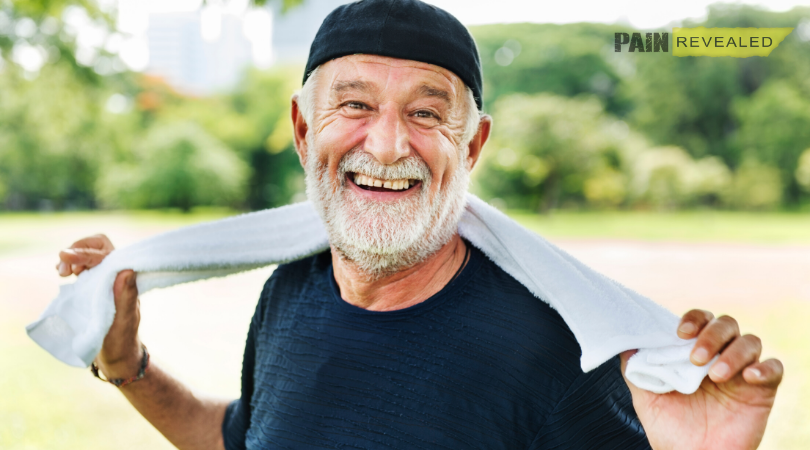Pedram Shojai sums up much of mainstream medicine with this simple formula: “if pain, then drug.” He tackles this mindset head-on with the assurance that taking responsibility for your pain is the only way not to be overcome by it.
He advocates lifestyle, biofeedback, meditation, and an array of other techniques that he knows work. “They’re not as easy as the pill,” he explains, “but they’re also not addictive.”
Shojai is a former Taoist monk who deals with a lot of people in pain in his Chinese medicine practice. One of his primary goals is to bring the esoteric concepts of Eastern medicine to patients of the West.
In Pain Revealed Episode 5, he spoke with us about his understanding of and approach to pain in the patients he works with. How is it that Dr. Shojai is so successful at treating pain?
He explains that there is a protein complex known as NF-kB that controls the gene expression for cytokines. Essentially, it the holy grail of inflammation pain, and inflammation is the mother of all disease. Therefore, if inflammation can be controlled, lives can be saved, and significant pain and suffering can be relieved.
He recommends mind-body activities like meditation, tai chi, and yoga to help modulate this, which means bringing down cytokine release. Shojai says this is something that is now being understood better and is strongly supported by an ever-growing body of research.

Shojai emphasizes the power of acupuncture. Most Western patients are initially afraid of the needles. Their experience, he explains, is not what they initially expected, “…you get these little tiny needles put in you and all of a sudden, you’re in this meditative state where you are so relaxed. People will tell me that I was floating on the table.”
The result is a reduction in cytokine activity which brings down inflammation in the whole body. The patient experiences a resilience that allows them to stretch, move, and regain agility that they had felt was lost.
He emphasizes the importance of not treating acupuncture or any other modality as a Band-Aid, however. Self-care is paramount, he explains, “…when you really want to address pain, if you don’t invoke and involve the patient in that, you’ve missed it…”
An important step in self-care for pain, he advises, is to teach patients not to focus on it. After all, when a patient focuses on it, it becomes a psychological trip-up that reinforces that reality. He elaborates, “…you have to look past it into your recovery and what your life looks when you get your function back, when you’re on the other side of that.”

It is important for patients to understand that their practitioner won’t be with them 24/7 to help, but unless they master their pain, it will!
He maintains it is important for patients to avoid feeling sorry for themselves when in pain, but to instead adapt and adjust. In part, lessons can be learned from a pain experience. For example, he explains that it can be as simple as a message from the body to stretch and warm up more each day to make activities less painful.
Shojai explains pain in terms of Chinese medicine, “The Chinese medical approach to pain is it’s a stagnation of chi, which is energy and stagnation of blood… If I had a dam right here, and the river is here, and it’s hitting against the dam, you start to get this swelling on one side and vacuity on another… This is the pain point.”

Taking away this obstruction of chi allows for the smooth flow of energy and blood beyond the pain point, and the pain goes away. He adds, “I’ve seen this hundreds and thousands of times in clinical practice.”
He summed up his treatment approach in a unique way: “Okay, let’s work on just making you feel better, let’s work on your attitude, let’s work on some goals, let’s work on what it is that you can do, and God, how about just having some fun? Right? Just getting some endorphins going.”
He adds, “It’s about building the endorphins, building the resilience, building the psychology around something positive, and then problem-solving and working through, whether it’s the rehab or the herbs. There’s a million ways to address pain, but if you focus on pain, you’re hitting that tree.”
Dr. Shojai shares more wisdom and advice with us in his interview in Episode 5. You can also visit his website for articles and information.

